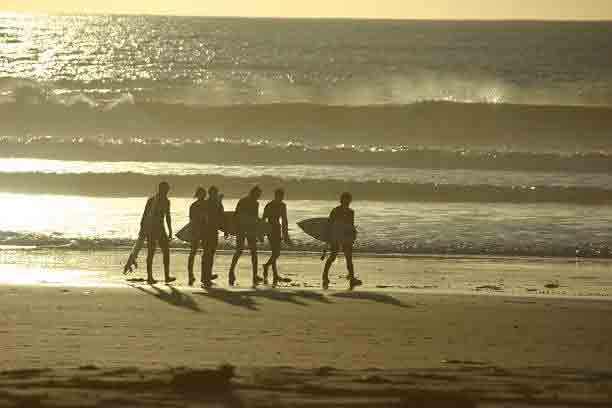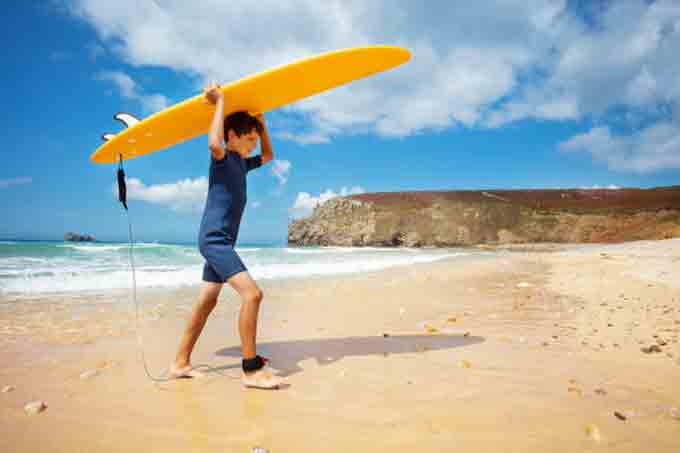Surfing is a tricky sport. Learning the basics (getting to your feet and riding waves) can take a while, even for the most patient of people.
It’s important to approach your first surfing lesson with a positive attitude and an open mind. Embrace the learning process and celebrate your small victories.

1. Know Your Limits
Whether you’re an experienced surfer or just starting out, it’s important to know your limits in the ocean. It is easy to get overwhelmed by the power of the waves and to push yourself too far past your comfort level, which can be dangerous for both you and those around you.
Surfing is a complex sport and requires the use of many different skills to properly execute a wave. This includes reading the water, knowing when a good wave is coming and how to catch it, paddling out, standing up on the board, and riding the whole way through until the end.
It’s also important to learn how to spot hazards, such as rip currents, and know when to stay out of the water. Taking a surf course and prioritizing your safety will help you progress in the sport safely. This will keep you, your friends and the ocean happy.
2. Pick the Right Surf Spot
When you’re new to surfing, it’s important that you find a surf spot that caters to beginners. This will ensure that you’re safe in the water and that you don’t get too over confident.
It’s also essential to pick a spot that’s close to the shore. This will make it easier for you to paddle out when you need to. In addition, it will help you avoid getting swept by a strong current or running into rocks.
Additionally, look for a sandy bottomed beach. This will make it safer to get in and out of the water. Keep in mind that surfing spots keep changing based on the tide, currents, and size of the waves. As a result, it’s possible that a beach that’s beginner-friendly now may not be as welcoming later. So be sure to research the area before you arrive. Then, you can be ready for an epic adventure! The beaches in Guanacaste are perfect for beginners to learn the sport.
3. Practice Makes Perfect
Surfing is a physically challenging sport and requires a high level of physical fitness. Practicing yoga and other core exercises will help build up the necessary strength and balance for surfing.
Taking a stage de surf capbreton is a good way to learn the basics of the sport, but to truly get the hang of it you must practice on your own as well. A lot of newbies fall off their boards the first few times they try to catch a wave, but you should never give up!
If you can’t catch a wave on your own then it’s best to seek out an instructor to provide feedback and help you learn the skills needed to improve. Having a surf coach will also make the learning process much more fun and faster. Learning to surf is a marathon, not a sprint, so don’t give up! With perseverance you will eventually turn into an apprentice ripper. Just remember that to become an intermediate surfer it will take a minimum of surfing once a fortnight at the beginner level.
4. Don’t Give Up
Surfing is not an easy sport, and it will take a lot of time to master. However, it is worth the effort. Learning to surf is one of the most rewarding experiences you will ever have in your life, and it will teach you so much about yourself.
The key to succeeding in your surfing lessons is staying positive and not giving up. Remember, everyone slips up at some point in their lives, and it is part of the learning process. Just don’t let a few setbacks discourage you from continuing with your lessons.
Conclusion:
You will also need to be physically prepared for your lessons. Surfing is a full-body workout, so be sure to eat a healthy breakfast and drink plenty of water before your lesson. It is also a good idea to wear sunscreen and protective clothing to avoid sunburn. Additionally, it is important to follow surf etiquette, such as avoiding taking other people’s waves or snaking.
